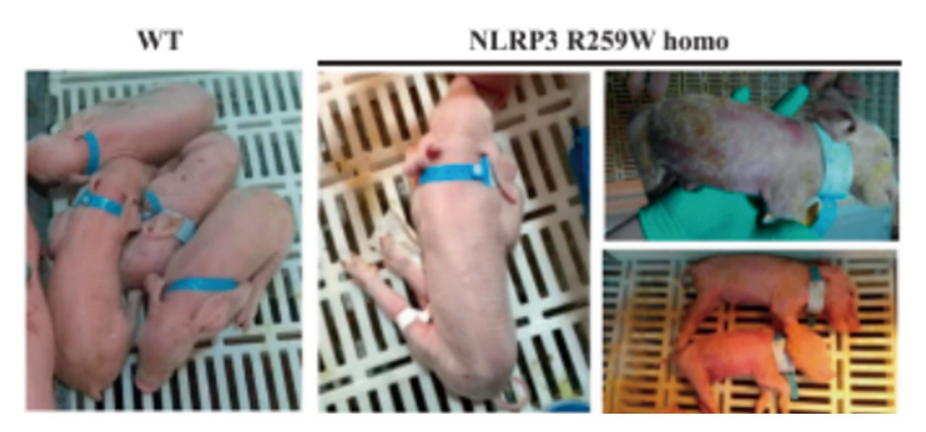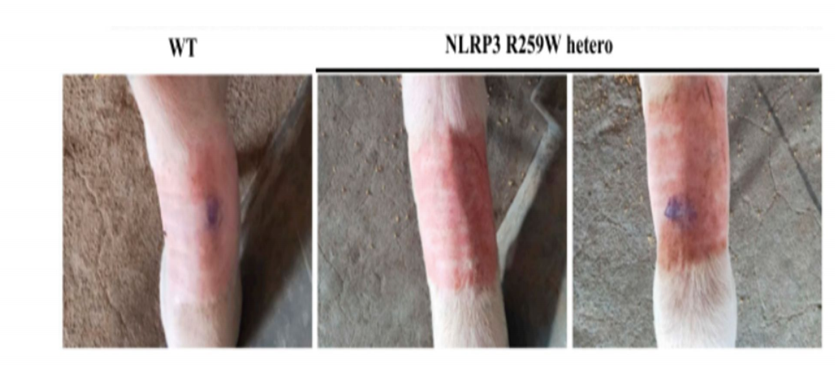NLRP3 inflammasome is associated with many diseases, including cryopyrin-associated autoinflammatory syndrome (CAPS) . The estimated prevalence of CAPS in France is 1/360,000.Of the 135 cases reported, 84% were family cases, and 16% were sporadic cases. Most (86%) of the patients have developed symptoms before the age of 10, whereas 96% of patients have developed symptoms before the age of 20. The three most common mutations in NLRP3 from patients with CAPS are Y348M (20%), V198M (16%), and R260W (15%).
Mouse models play an important role in elucidating the molecular mechanism and the pathology of NLRP3-associated diseases. However, the activation pattern and signaling pathway of the mouse NLRP3 immune body are not always the same as in humans, the NLRP3 inflammasome activation in pigs is similar to that in human. Therefore, pigs with precise NLRP3 point mutations may model human CAPS more accurately. Single-stranded oligonucleotides (ssODNs) combining CRISPR/Cpf1 technology with the SCNT approach were used to generate a pig model with NLRP3 R259W homozygous (NLRP3 R259W homo) mutation (homologous to R260Win humans).
Pig Breed: Landrace







